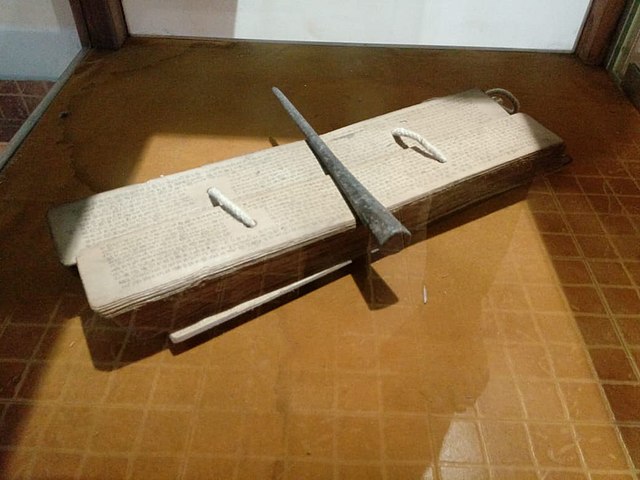Manipravalam is a macaronic language found in some manuscripts of South India. It is a hybrid language, typically written in the Grantha script, which combines Sanskrit lexicon and Tamil morpho-syntax. According to language scholars Giovanni Ciotti and Marco Franceschini, the blending of Tamil and Sanskrit is evidenced in manuscripts and their colophons over a long period of time, and this ultimately may have contributed to the emergence of Manipravalam. However, the 14th century Sanskrit work Lilatilakam states that Manipravalam is a combination of Dravidian and Sanskrit. Generally, it is agreed that it was a combination of Middle Tamil and Sanskrit.
Manipravalam used to write Malayalam
Example of Manipravalam text converted to Tamil language and script
Malayalam script is a Brahmic script used commonly to write Malayalam, which is the principal language of Kerala, India, spoken by 45 million people in the world. It is a Dravidian language spoken in the Indian state of Kerala and the union territories of Lakshadweep and Puducherry by the Malayali people. It is one of the official scripts of the Indian Republic. Malayalam script is also widely used for writing Sanskrit texts in Kerala.
The Quilon Syrian copper plates (849/850 CE) is the available oldest inscription written in Old Malayalam. Besides Old Malayalam, the copper plate also contains signatures in Arabic (Kufic script), Middle Persian (cursive Pahlavi script) and Judeo-Persian (standard square Hebrew) scripts.
A bilingual sign in Malayalam and Latin script (English) at Changaramkulam, Malappuram, Kerala
Copy of Thunchaththu Ezhuthachan's stylus and Adhyatma Ramayanam preserved at Thunchan Parambu, Tirur
The Thunchath Ezhuthachan Malayalam University is situated at Thunchan Parambu, Tirur, Malappuram






